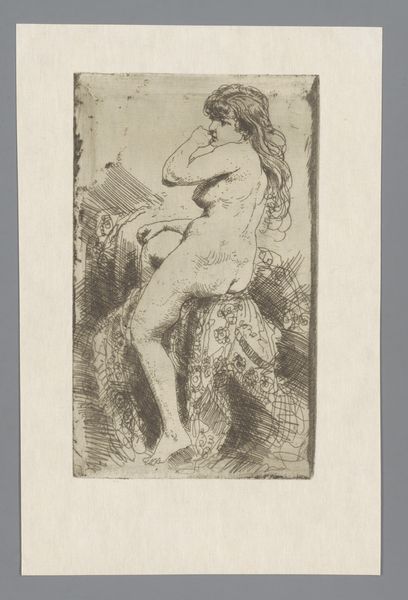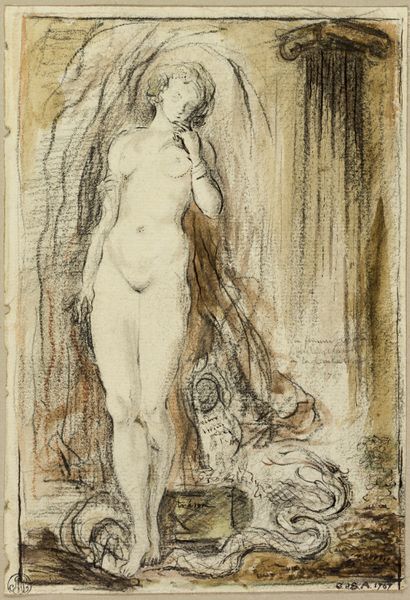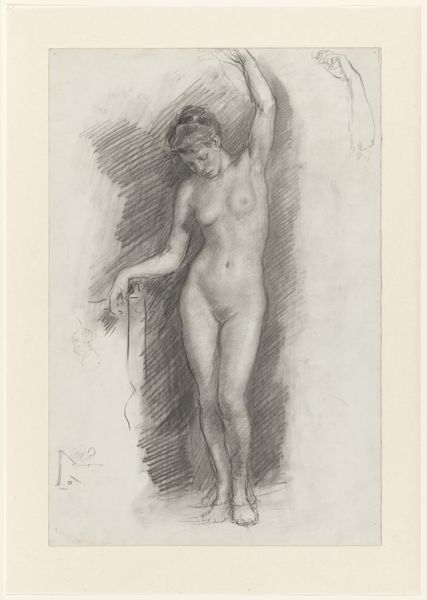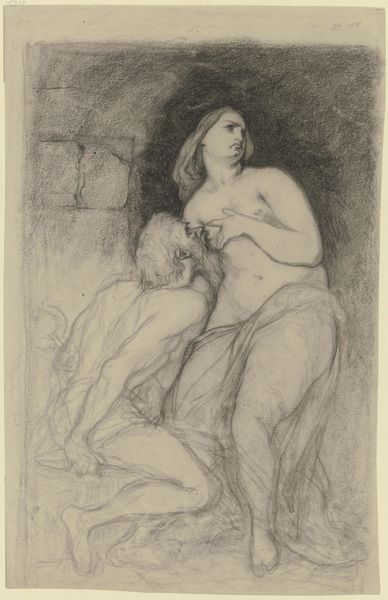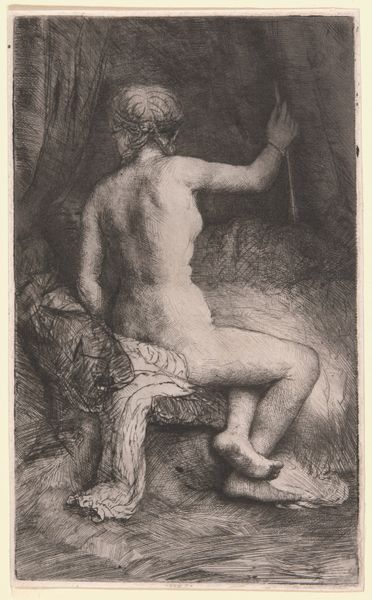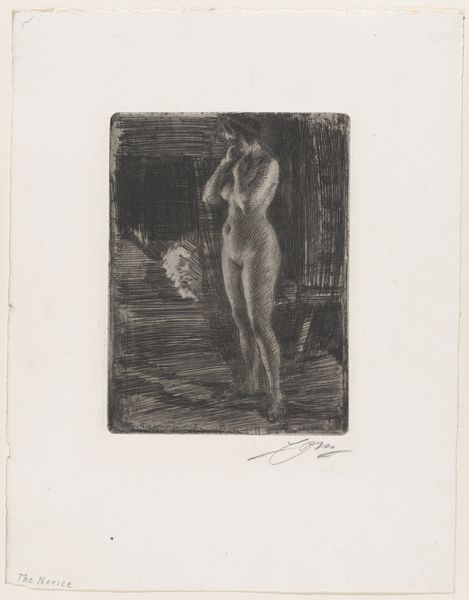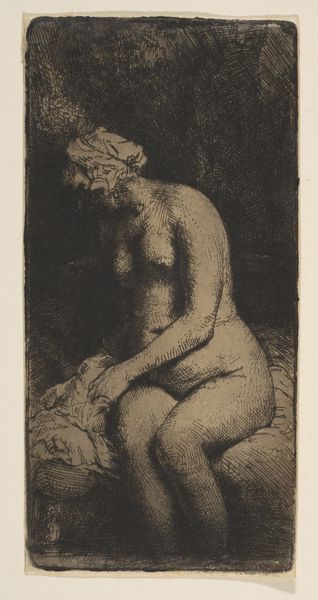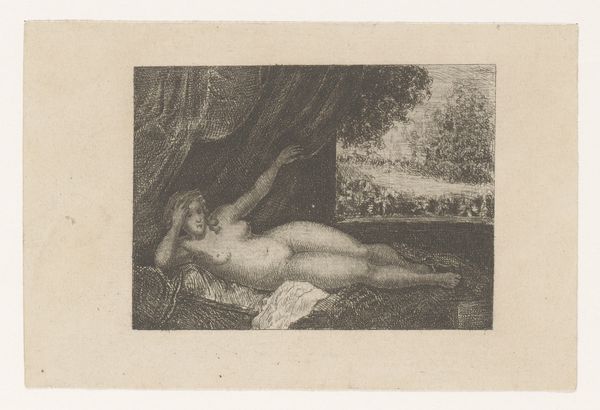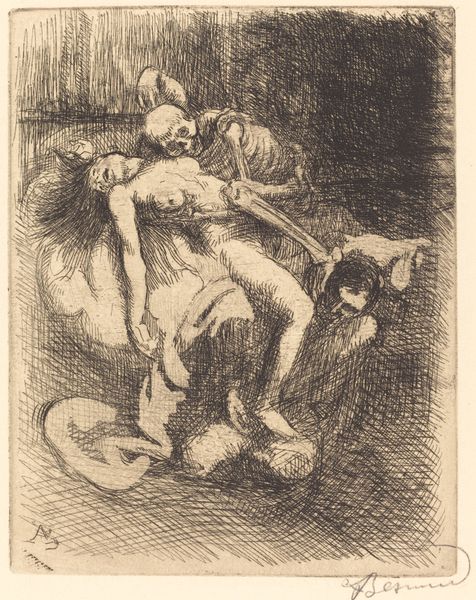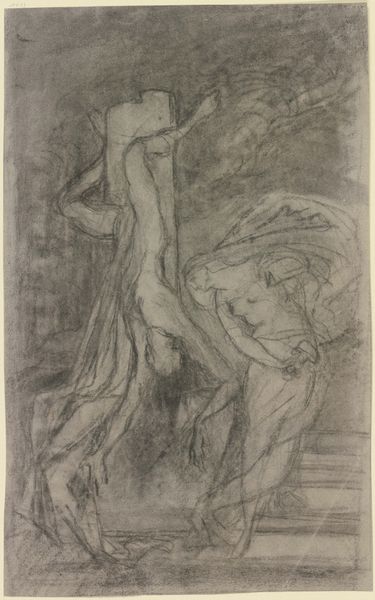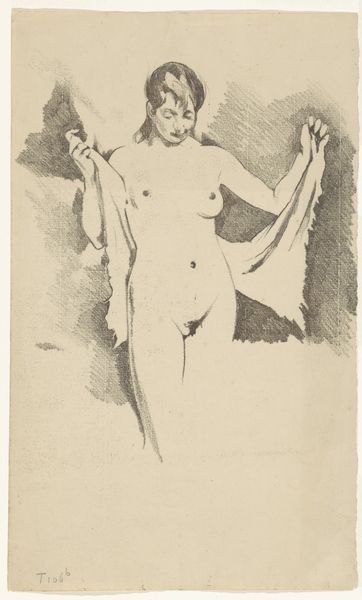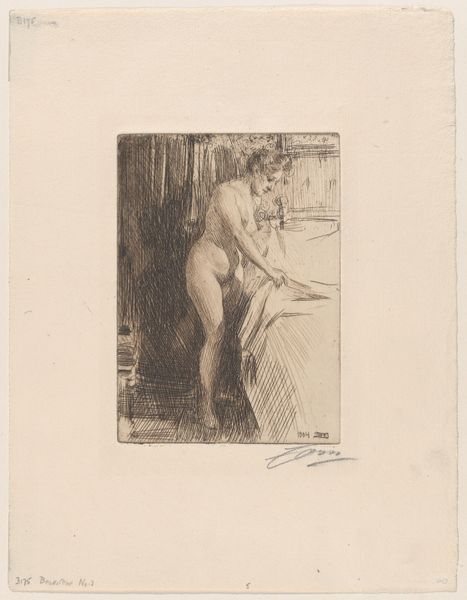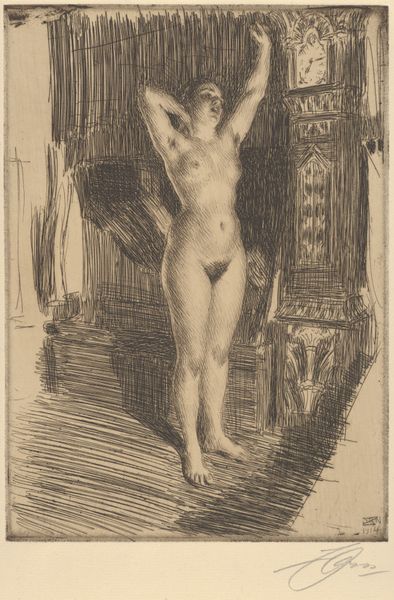
Dimensions: height 130 mm, width 88 mm
Copyright: Rijks Museum: Open Domain
Curator: This etching, dating from 1852-1890, is titled "Vrouw wordt aangekleed door haar kamenier"—"Woman being dressed by her chambermaid." It's the work of Willem Linnig, and currently resides here at the Rijksmuseum. Editor: There's a softness to it, a gentle observation that transcends its delicate, scratchy lines. It evokes a quiet intimacy despite the figures being rendered in the nude. Curator: Absolutely. The theme is both intimate and historical, drawing heavily on romantic and academic traditions. Linnig is interested in genre-painting that, beneath the surface, evokes complex dynamics of class and servitude, but in this scene, we observe primarily the private act of preparation. Think about the symbolism of clothing itself: it’s about identity, performance, social expectation. Editor: That's interesting given the social context—mid to late 19th century. How does the material process speak to these ideas? This is etching, a repeatable process that makes an image broadly accessible. Was this a radical democratization of the nude, or merely a romanticized peek into private spaces of the bourgeois? The etching creates an aesthetic graininess that enhances the naturalism of the scene, suggesting labor at various levels. Curator: Linnig worked to create an imagined reality but of his own time; the nude figure is no doubt idealized according to academic standards, yet there's also an honesty. What kind of emotional reality might we reconstruct for this exchange? Is it one of comfort, servitude, indifference? And does the soft vulnerability expressed by the woman’s body carry social and psychological weight, and how is this weight related to historical visual canons for depicting the female form? Editor: Looking closely at the servant’s face and body, the work raises other questions. What materials informed their labor? What was the quality of her clothing in life? The image offers the privileged the comfortable feeling of proximity but flattens the complexity of this other body into the background. But at the end it still a work of art for us to discuss and investigate. Curator: A vital, enduring work that challenges and engages across eras. Editor: Precisely. And always more questions than answers, isn't it?
Comments
No comments
Be the first to comment and join the conversation on the ultimate creative platform.
